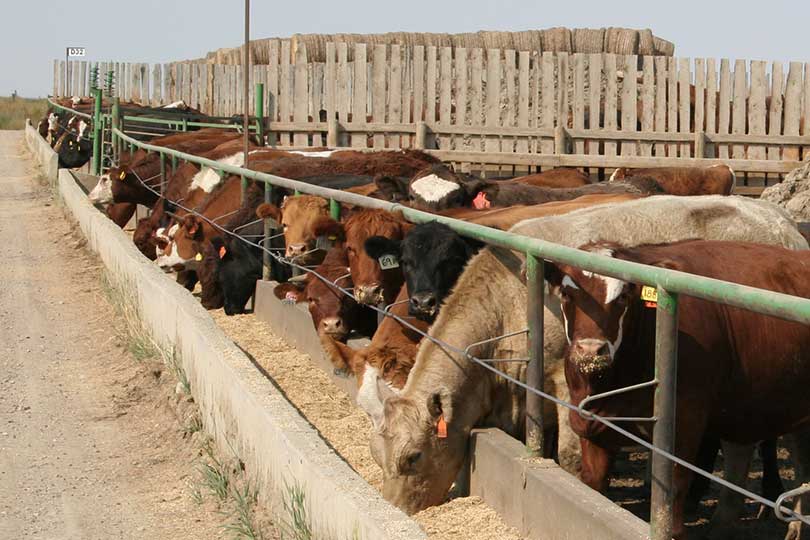By Jennifer Dorsett
Field Editor
After a roller coaster couple of months for cash fed cattle prices, ranchers are now seeing a slowdown in purchases as meat packing plants adjust production due to COVID-19 outbreaks in the workforce.
Some plants are expected to partially reopen, but cash cattle markets are likely to remain at light-to-moderate activity again this week, according to DTN analyst Rick Kment.
Last week’s slaughter volume of 425,000 head—37 percent lower than the same time last year—left large inventories on hand at feedyards across the country, Kment added.
Cash prices for fed cattle continued to fluctuate widely across the U.S., leading some to conclude true price discovery has not been achieved. Weekly prices were anywhere from $90 to $105, while dressed purchases ranged from $148 to $160.
Economists say that much of a price gap is unusual, but it’s a reflection of the uneven demand in different areas due to the closure of some meat processing facilities.
Meanwhile, boxed beef cutouts continue to reach new record highs. Choice boxed beef cutout closed Monday evening at $410.05/cwt, $32.60 higher than the close of the previous week, while Select beef saw a gain of $19.53 over Friday to close at $376.66/cwt.
But some sale barn owners report they’re selling less than half the number of cattle than normal.
Ranchers are also feeling the effects of a slower market and facing tough decisions for feeder and stocker calves, Texas Farm Bureau (TFB) Associate Director of Commodity and Regulatory Activities Tracy Tomascik said.
“Holding onto those calves longer means they may need supplemental feed, which adds costs in a low market, and many ranchers may be short on hay after prolonged dry conditions in 2019.” Tomascik said. “But hay harvesting is in high gear this week, and there’s a need to remove excess winter forage from fields before it loses all of its nutritional value.”
In Texas, livestock are currently rated in fair to good condition. Supplemental feeding is still going on across much of the state but has slowed in many areas as pasture and range conditions improved.
“Grass conditions are fairly good across parts of the state, but some areas with high cattle populations are already seeing summer-like situations,” he said. “The whole state will dry up quickly under high pressure systems and hot temperatures without timely rain in May. South Texas, the Rio Grande Valley, Coastal Bend and parts of West Texas and the Panhandle are already facing varying levels of drought conditions.”
There’s a large surplus of cattle that haven’t been sold, he added, and conditions could dictate increased feeding if ranchers choose to hold their cattle in hopes of a market correction.
“It’s fair to say anything could happen in the next 30 days—good, bad or really ugly for ranchers,” Tomascik said.

